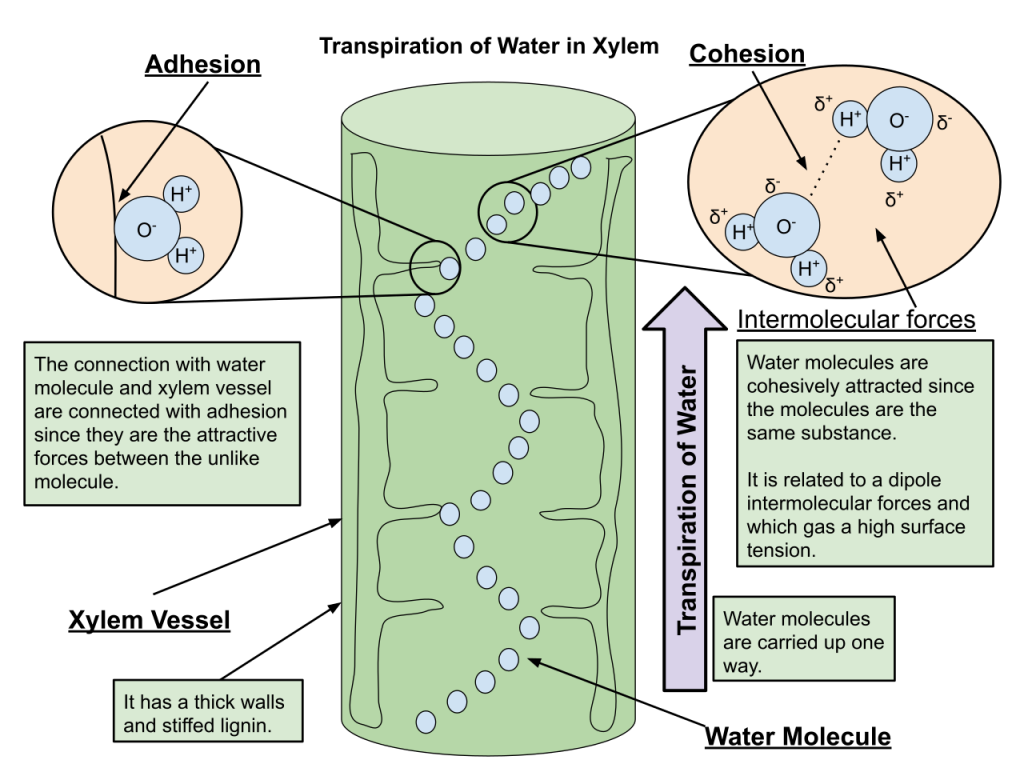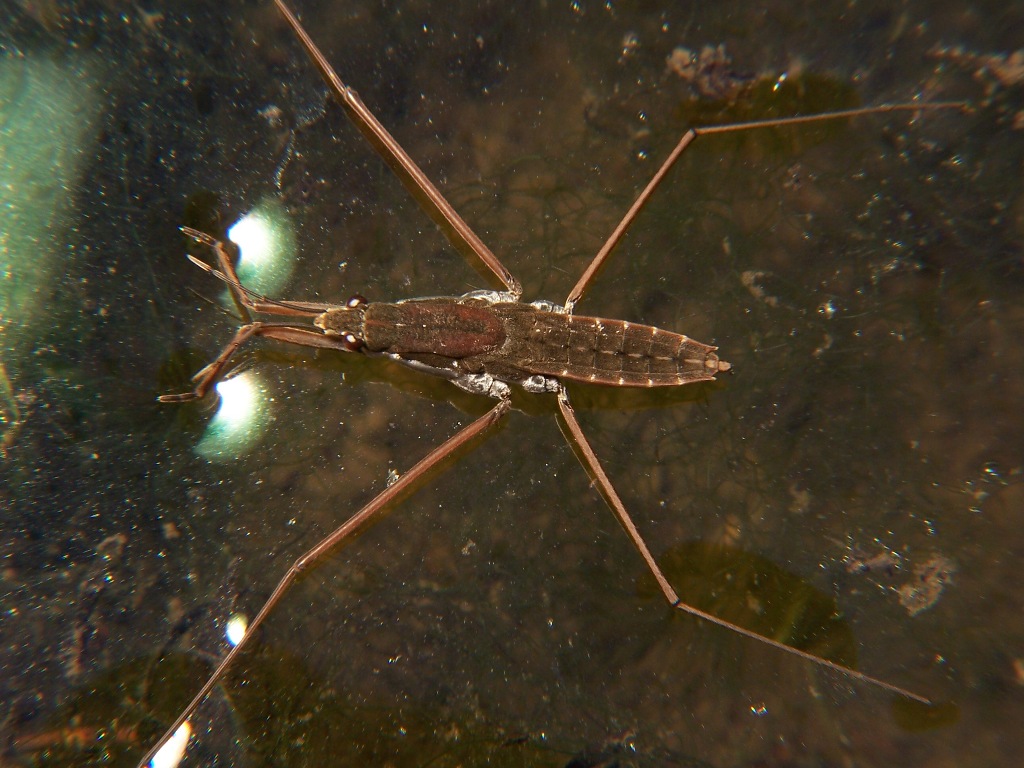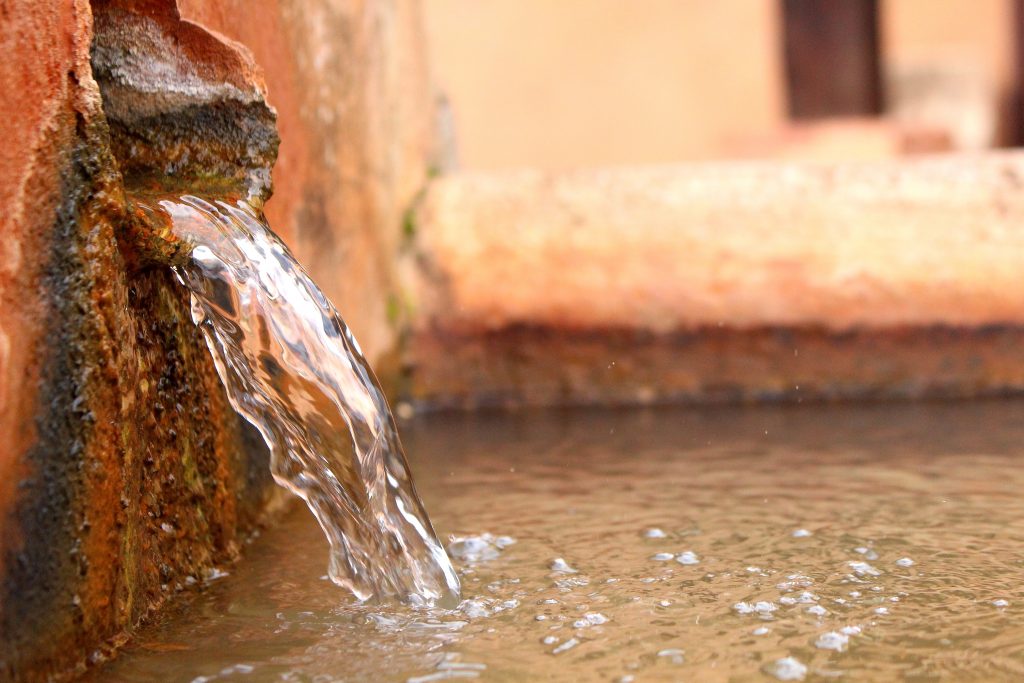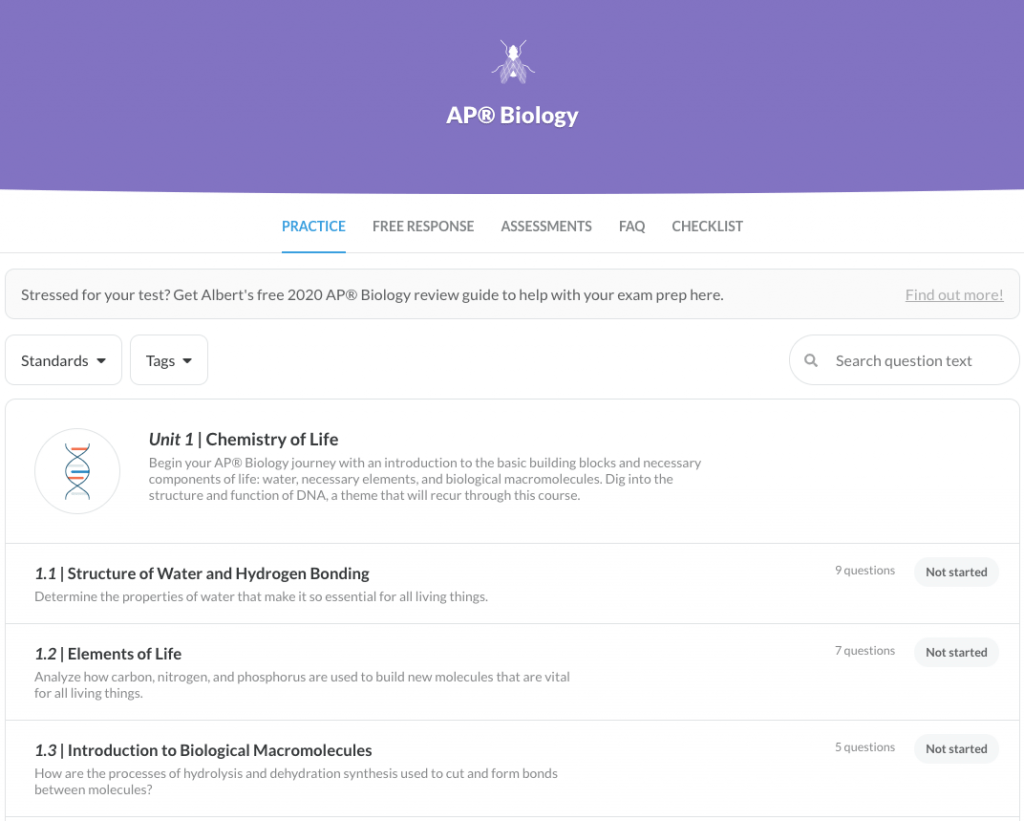A Quick Review of the Properties of Water
Properties of Water Introduction
On the AP® Biology examination, many students struggle with questions that chronicle to the properties of water. This topic is usually covered at the beginning of the year, and when information technology comes to all the information students are responsible in AP® Bio, information technology gets forgotten. The properties of h2o are essential to maintaining homeostasis, a stable equilibrium, in organisms and in the earth.
In this AP® Biology Crash Course Review, nosotros volition review the data that is essential for you to sympathise nigh water backdrop. We will begin by talking near the polarity of h2o and how its polarity lends itself to making water 1 of the most of import chemicals on World. We volition then talk about several important properties that water has that allow organisms to survive. Finally, we volition review a free response question about the backdrop of water that students were given on the 2009 AP® Biological science examination.
The Importance of Polarity & Hydrogen Bonds
At this bespeak in your science career, you have probably learned nearly polarity. A polar molecule is a molecule that does non share its electrons as between its atoms. This electron imbalance causes the molecule to have positive and negative dipoles; because the electrons are spending more than fourth dimension at i terminate (due to unequal sharing), this part of the molecule will have a fractional negative charge. The end that is pulling the electron towards information technology will be the negative dipole, and the end getting the electron pulled away from it volition be the positive dipole.
The corporeality of force that the negative atom exerts is called electronegativity. It is of import to sympathize that oxygen has one of the highest electronegativity values, which ways that it volition pull the electrons away from the atom that it is connected to, making it the negative dipole. In the case of h2o, oxygen will pull the electron from hydrogen. Keep in mind that water molecules are notwithstanding sharing their electrons, just the electrons spend a longer amount of time with the oxygen than with the hydrogen.
Why is all of this important? The dipoles terminate up making the oxygen atom negatively charged and the hydrogen atoms positively charged. Water is made up of millions of these molecules, which cause them to orient themselves in a certain mode. The negative office of one water molecule will want to exist near the positive part of another. This filigree-similar bonding is called hydrogen bonding.
Hydrogen bonding is one of the most important things that you must know about water. Hydrogen bonding is the reason for the backdrop of water that y'all must know for your AP® Bio examination. For every belongings that we hash out, we volition review how it occurs due to hydrogen bonding and how that affects life on Earth.

Adhesion
The showtime ii properties that we volition hash out in our AP® Biological science Crash Class Review are related to each other: adhesion and cohesion. Adhesion is the holding of water that refers to water molecules sticking to another surface. Cohesion is the property of water that refers to water molecules sticking to each other. Both of these properties are due to hydrogen bonding and how hydrogen bonding orients the water molecules.
Adhesion is an of import property. To demonstrate adhesion, fill a test tube with water. You will see the h2o create a U. This U is called the meniscus. The meniscus is formed because the water is sticking to the glass of the test tube. If y'all take an even skinnier examination tube, you will see that the meniscus volition go deeper (the h2o will crawl higher). If you don't take a exam tube, please annotation the illustration.
Adhesion occurs naturally equally well and is the reason that copse can be tall. Trees go their h2o from their roots. Roots are far away from the leaves that demand the water. The xylem is the part of the tree that h2o moves up, against gravity, to get to the leaves. The xylem is fabricated upward of little capillaries. When water enters into the xylem, the water volition adhere to the sides of the capillary and let it to movement to the leaves. This procedure is called capillary action and is vital to the survival of plants.
Cohesion
Cohesion, equally we have introduced, is water's power to bind to itself. Cohesion is responsible for surface tension, which means that water droplets will resist rupture when stress and pressure are added to the system.
Cohesion occurs when h2o is surrounded by air. The molecules that exist on the ends of aerosol take fewer opportunities to hydrogen bail. This causes their hydrogen bonds to strengthen; the surface is able to withstand tension.
Cohesion is an essential property of h2o for many insect species. An instance is found in the Gerridae family unit of insects. These insects are commonly called water striders. They are able to utilize the surface tension of water to stand on the water. The habitat of water striders is the surface of calm waters. It is here where they hunt and reproduce. Without the cohesive properties of waters, these insects would not survive as they do at present.

Specific Heat Capacity
Due to the forcefulness of hydrogen bonds, water has an extremely loftier specific heat capacity. Specific oestrus refers to the amount of heat necessary to motility a substance up one degree Celsius. A high specific heat capacity means that h2o is able to withstand a high amount of free energy before its temperature is inverse; this is due to water's hydrogen bonding. In order for water to be heated up, hydrogen bonds must be cleaved. This boosted energy needed to intermission the bonds gives water the ability to withstand temperature changes.
There are two important temperatures that are often studied in compounds: estrus of vaporization and heat of fusion. Heat of vaporization refers to the rut needed to move a compound from liquid state to gas state. Heat of fusion refers to the rut needed to move a compound class the solid state to liquid land. Due to the hydrogen bonds, h2o has both high rut of vaporization and high heat of fusion.
The loftier specific rut is extremely important to the survival of organisms on Earth. Earth is made up of seventy% water. The water on the planet prevents the temperature from radically irresolute. When the temperature changes in the atmosphere, h2o absorbs the change in temperature, preventing organisms from having to survive in dynamic environments. Additionally, humans (similar most organisms), have bodies with very high h2o contents. For the very aforementioned reason, this water content prevents body temperature from fluctuating.
Ice Density
This may seem like the nearly obvious property of water; water in its solid form floats in its liquid form. The majority of substances found on Earth have a much denser solid version than liquid version, which should make intuitive sense. When a substance becomes solid, it condenses, making the bonds closer and stronger. Why then does water disobey this rule and float? You probably guessed information technology, hydrogen bonds.
The hydrogen bonds in water cause solid water to grade a three-dimensional matrix. The hydrogen bonds keep the bonds spread out, non assuasive water to condense, only rather forcing it to spread. When water is in a liquid state, hydrogen bonds are much more than flexible and able to movement around. When water becomes a solid, the bonds become less flexible, causing the water to expand. The expansion of the bonds causes the ice's density to decrease; less dense compounds will float in more than dense compounds.
Other than existence interesting, this is extremely vital to our survival on Globe. If water sank when it was in its solid grade, considering the water ice density was lower, our planet would exist frozen. If water sank when it was exposed to frigid temperatures, the next layer of water would sink likewise until the entire body of water was frozen solid. Not only would marine animals die, but terrestrial organisms would probable non survive either.
Universal Solvent

You lot may have heard that water is the universal solvent. Water is considered the universal solvent, because it is able to dissolve compounds very rapidly. This belongings is unique to water because of the dipoles that h2o molecules have.
When a compound is introduced to water, molecules of water will surround it, forming a cage effectually the molecules of the compound. For case, when NaCl (table salt) is placed in water, Na is ripped from Cl. Water molecules rip apart the chemical compound, because positively charged hydrogen molecules desire to bond with the negatively charged chlorine ion. Additionally, the negatively charged oxygen dipole wants to bond with the positively charged sodium ion. This allure forces the molecules apart and causes water to dissolve salt chop-chop.
There is a form of compounds, which water will not be able to dissolve. These compounds are nonpolar compounds. Nonpolar compounds share their electrons every bit and exercise not have charges or dipoles. Because of this characteristic, water volition not be able to pull apart the different molecules. This is the reason why oil (nonpolar) and water (polar)volition not mix.
Solvents are incredibly necessary for many reasons. We are constantly ingesting food that must be broken down speedily and efficiently. The presence of water in our bodies aids in our digestion. Solvents are important in almost every chemical reaction.
Summary
In this AP® Biology Crash Course Review nosotros take talked almost the many unlike properties of h2o that let life on World. We talked about cohesion, which allows for insects like h2o striders to stand up on water. We reviewed adhesion as well, which allows h2o to travel upwards to the leaves of a tree. We then learned nearly water's high specific heat and how that allows the temperature on Earth and in organisms, like humans, to stay at homeostasis. Next, nosotros talked about how water's solid class, ice, floats and how that has allowed our oceans to remain thawed. Finally, we learned about how water is a universal solvent capable of dissolving whatever polar substance.
There has been a lot of information to review in this article, Water Properties: AP® Biological science Crash Class Review. To make sure that you feel comfy, we will now review an AP® Bio question nigh water properties that was seen on the AP® examination in 2009.
AP® Biology Exam Question
Water is essential to all living things.
(a) Hash out THREE backdrop of water.
(b) Explain each of the following in terms of the properties of water. You are non express to the three properties discussed in role (a):
- the role of water as a medium for the metabolic processes of cells
- the ability of water to moderate temperature within living organisms and in organisms' environments
- the motion of water from the roots to the leaves of plants
For role A, you have choices. Here are a few of the answers that the AP® Biology Test would accept for total points:
| Belongings | Clarification |
| Cohesion | Attraction to other water molecules, surface tension |
| Adhesion | Allure to other surfaces |
| High Specific Oestrus | Heat absorption without temperature change |
| States of Matter | Ice is less dense than h2o, expands and becomes less dense |
| High heat of vaporization | Water molecules absorb energy |
For part B, you must explain the three important parts of life on Earth and how water is necessary for their existence. The offset example refers to water's ability to be a universal solvent. We reviewed that it is important that water is able to dissolve substances, and in a jail cell, this is especially of import. Water's presence too allows for many chemical reactions to occur.
The second example we reviewed previously in this commodity. Water moderates temperature by absorbing rut and not changing temperature. This allows for the climate to remain more stable. Water'south high specific estrus will also allow for constant internal environments inside organisms.
Finally, the third example we tin use the capillary action of water. H2o moves up the xylem of the tree in society to achieve the leaves. H2o moves using adhesion and capillary activeness.
Give thanks you so much for reading our article! Permit usa know if yous have any questions or if you want to share how yous are studying for your AP® Bio exam below. If y'all want to keep studying, bank check out our commodity Homeostasis: AP® Biology Crash Class Review now!
Need help preparing for your AP® Biology exam?

Albert has hundreds of AP® Biology practice questions, gratuitous response, and full-length practice tests to try out.
Are you a teacher or administrator interested in boosting AP® Biology student outcomes?
Acquire more about our school licenses here.
Source: https://www.albert.io/blog/properties-of-water-ap-biology-crash-course-review/
0 Response to "A Quick Review of the Properties of Water"
Post a Comment